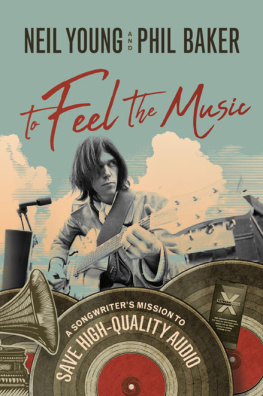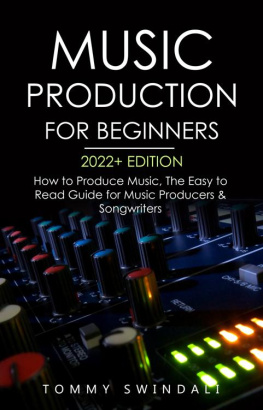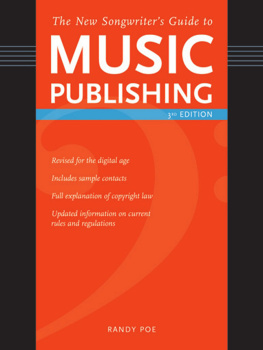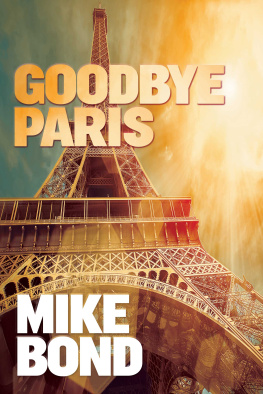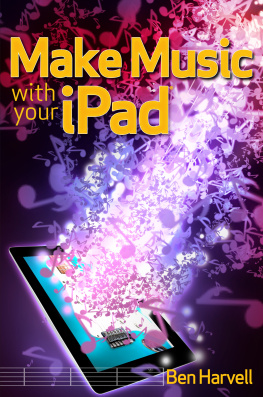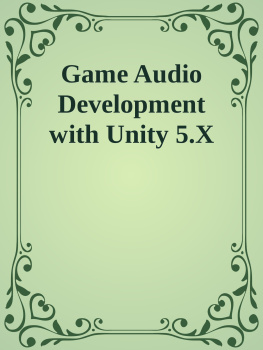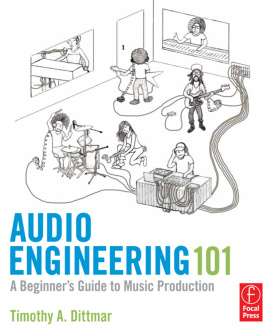Table of Contents
Guide
Neil and Phil
Wed like to thank the many people who have helped us on this journey to improve the sound of music.
To those who were a part of Pono: the late Elliot Roberts, Craig Kallman, John Hamm, Pedram Abrari, Bruce Botnick, Mark Goldstein, Ian Kendrick, Mike Nuttall, and Bob Stuart, all of whom helped with the research for this book. Thanks to the rest of the Pono team: James Berberian, Irina Boykova, Greg Chao, Rick Cohen, Kevin Fielding, Dave Gallatin, Simon Gatrall, Damani Jackson, Sami Kamangar, Franz Krachtus, Randy Leasure, Dave Paulsen, Ariel Brown, Jason Rubenstein, Reynold Starnes, Zeke Young, Gigi Brisson, and Harvey Alison. Special thanks to the late Charley Hansen and Pegi Young.
To our PCH manufacturing team: Liam Casey, Matthieu Charlier, Eliza Choi, John Garvey, Carlos Martin, Charlie Nolan, Ray Porter, Jennie Yang, Andre Yousefi, Norman Zhu, and many more.
To those who have been a part of NYA: Hannah Johnson, Toshi Onuki, Zeke Young, Katie Fox, Liela Crosset, Frankie Tan, Kelvin Lee, John ONeill, Stuart Mouritzen, Mike Ryan, Gordon Smith, and Scott Andrew and the Lookout Management team: Frank Gironda, Bonnie Levetin, and Tim Bruegger.
To those who have supported us the entire time and through the ups and downs with encouragement and advice: Marc Benioff, John Hanlon, John Tyson, and Dan Hesse.
A special thanks to Larry Reich and Craig Kallman for bringing us together.
Thanks also to our wives, Daryl and Jane, for their loving support.
Thanks to our agent, Bill Gladstone; our editor, Vy Tran, who did a superb job in helping us tell our story; and our copyeditor, James Fraleigh. Thanks to Glenn Yeffeth, Publisher of BenBella Books, and to the companys great support staff.
Finally, special thanks to each of the investors and to all of the others we may have omitted; the Kickstarter supporters, the Pono community, and to all of the fans who helped us along the way and believed then and still believe how important it is to feel the music.
NEIL YOUNG is one of the worlds most famous musicians, with millions of followers around the globe. Hes a Canadian singer-songwriter, musician, producer, director, and screenwriter. His music career began in the 1960s, when he formed Buffalo Springfield with Stephen Stills. He joined Crosby, Stills & Nash, and has recorded solo albums with his backing bands Crazy Horse and Promise of the Real. Young has recorded a steady stream of studio and live albums. He also plays piano, guitar, and harmonica on many of his albums, which frequently combine folk, rock, country, and other musical styles. He continues to tour and record new albums.
Young has received numerous Grammy and Juno awards. Hes a member of the Rock & Roll Hall of Fame and is the thirty-fourth-greatest rock n roll artist in Rolling Stone magazines list of the 100 greatest artists of all time.
Young is an environmentalist and outspoken advocate for the welfare of small farmers, having cofounded the benefit concert Farm Aid with Willie Nelson. Young helped found The Bridge School, an educational organization for children with severe verbal and physical disabilities.
Young has appeared as a guest on many major network shows, including The Late Show with Stephen Colbert, The Tonight Show Starring Jimmy Fallon, The Late Show with David Letterman, Saturday Night Live, and The Big Interview with Dan Rather, and has written two previous books: Waging Heavy Peace: A Hippie Dream and Special Deluxe: A Memory of Life and Cars.
He continues to enjoy a huge following with his frequent concert tours. Young resides in Malibu, California, and Colorado, with his wife, Daryl.
PHIL BAKER has been developing consumer electronics products for his entire career, including many iconic products for Polaroid, Apple, Seiko, Barnes & Noble, Think Outside, Pono, and others. He holds more than thirty patents and was a San Diego Ernst & Young Entrepreneur of the Year for his invention of the Think Outside Stowaway Keyboard.
Baker is the author of From Concept to Consumer, which details the product development process and is a valuable resource for anyone wanting to embark on developing a high-tech consumer product.
Baker is also a technology writer and journalist. He wrote a weekly column, On Technology, for the San Diego Transcript for twelve years and continues to write technology columns for a number of websites. He was recipient of the 2015 San Diego Columnist of the Year award.
Baker holds a BS degree in physics from Worcester Polytechnic Institute, a masters degree in engineering from Yale, and an MBA from Northeastern University.
Baker and Young began working together to develop the Pono Music Player in 2012 and continue to work together on other projects, including the Neil Young Archives. Baker resides in Solana Beach, California, with his wife, Jane.
M usic has been one of the great joys of my life. Ive performed for more than fifty years and written and recorded scores of albums. Ive traveled around the world performing for audiences in dozens of countries. Theres nothing as good as a live performance where the music is unfilteredwhere it fills the air, reverberates, and is just so pure and organic. Likewise, a great recording that tries to replicate this is also in a class by itself. Its an art form.
In the sixties and seventies, advances in audio equipment, high-quality vinyl, and tape recording brought wonderful-sounding music into the home. While not the same as live performances, the sound was an art form unto itself and allowed listeners to enjoy the music, become immersed in it, and be exposed to many of its nuances.
ENTER THE DIGITAL AGE
Yet in the early eighties, instead of audio improving even more, something unexpected occurred. When digital music became available on the compact disc (CD), I got very excited. I thought, Finally, no more cracks, no more pops, no more surface noises that had accompanied vinyl records. All the artifacts would be gone.
When I went into the studio after making my recordings, I did what I usually did. I cranked up the volume and started mixing, listening to CD quality from my new digital machines. After three hours, my ears were killing me! They were ringing and really hurting badly. That was when I first realized that something was wrong.
The CD was a brand-new format, and because it was new, it was highly promoted and pushed very hard by the music and tech industries. But convenient as it was, it was inferior to its predecessors, such as vinyl and tape recordings, in terms of audio quality.
That was the beginning of a downward spiral, where at each step along the way of supposed progress, quality was compromised for convenience. And from that point to today, weve experienced this degradation over and over: multiple new formats, each sounding worse than what came before.
To me it simply made no sense. People tend to dislike new formats since they need to keep buying the same content over and over. But to buy the same content and get something worse? That was terrible! I thought, all we really need is one format, and if we have just one format, it should be greatthe best it can be.
Unfortunately, today there is no convenient way for the mass audience to purchase the early high-quality recordings that come close to the original performances. Listeners cannot enjoy the history of recorded sound and the magical recordings of the last century at their finest. These high-quality recordings are currently only available to the elite few who pay a premium for their music and have the expensive equipment needed to enjoy it. And because the audience that can afford these recordings is so small, theres only a very limited number of titles available. Instead, the record companies focus on what they can sell: inferior quality made for cell phones.
Next page
